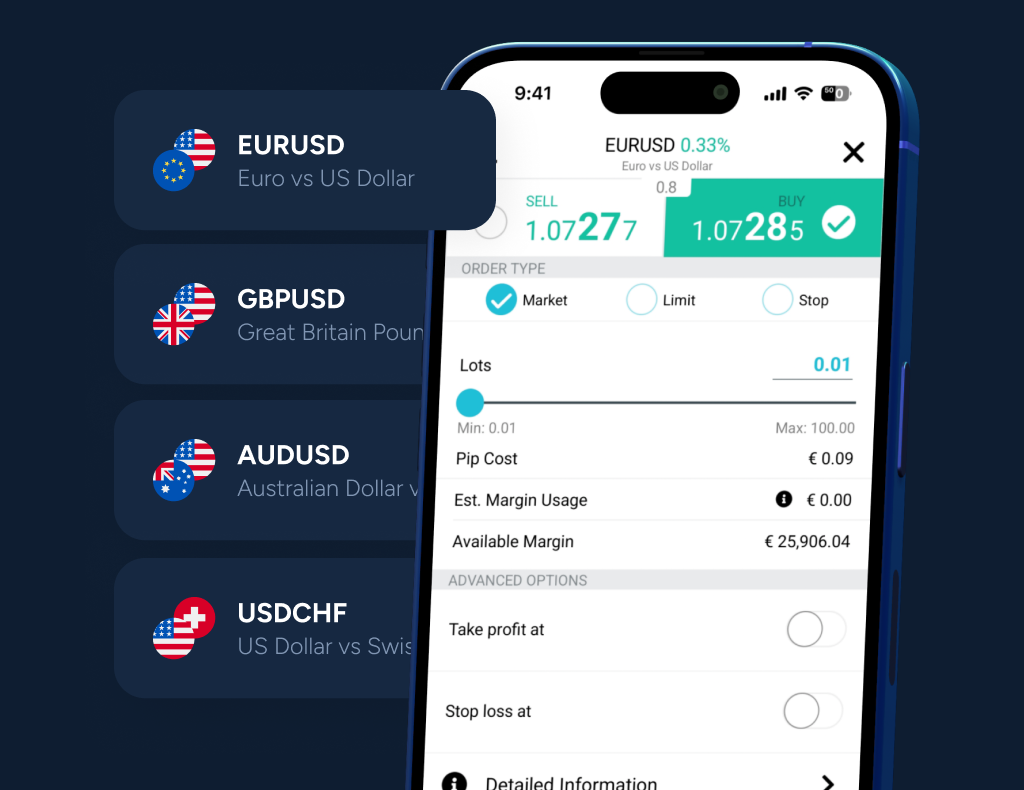Enjoy superior trading conditions with ThinkMarkets
Spreads from 0
Benefit from some of the industry’s tightest spreads on popular FX pairs.
Fast execution
Experience fast execution, with 95% of orders completed in under 0.2 seconds.
High fill rates
Receive 99.9% fill rates without any requotes or manual desk intervention.
Why trade forex?

24/5 trading
Take advantage of potential price movements day and night with 24/5 trading.
Automated trading
Utilise Expert Advisors (EAs) to automate your forex trading decisions.
Flexible access
Open positions in full, mini and micro lots, enabling you to trade even with a small amount of capital.
Forex trading scenarios
EUR/USD
$1.1800
1 lot (100,000)
$1.1800 ×100,000 =$118,000
$118,000 ÷ 30 =$3,933.33
Your research tells you that the price of EUR/USD is going to rise.
EXIT PRICE
$1.1850
PROFIT/LOSS
=(Exit price -entry price) ×Trade size
=(1.1850 -1.1800) ×100,000
=0.005 ×100,000
=500
EXIT PRICE
$1.1750
PROFIT/LOSS
=(Exit price -entry price) ×Trade size
=(1.1750 -1.1800) ×100,000
=-0.005 ×100,000
=-500